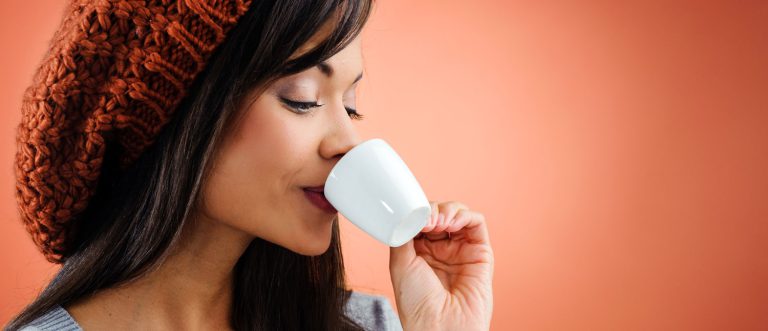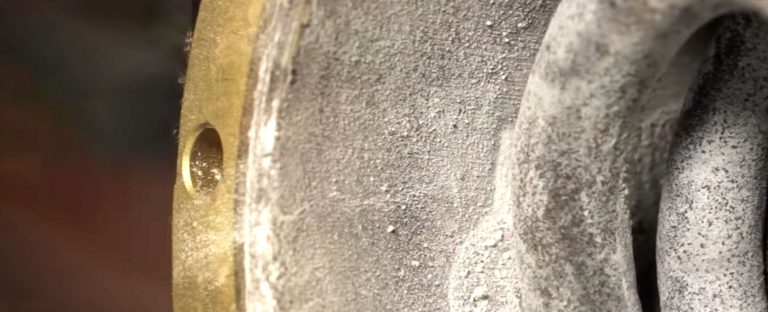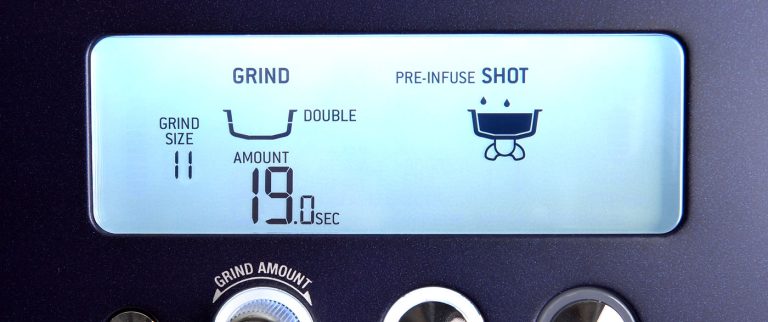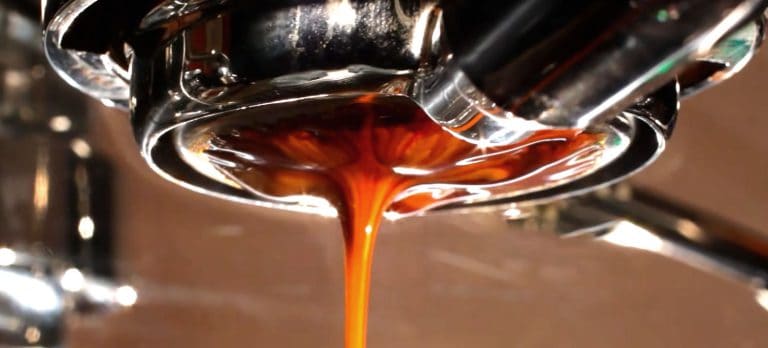Can You Really Eat Coffee Beans? A Comprehensive Guide to Doing It Right
Being in the coffee industry, more and more friends have started asking me whether it is safe for them to eat coffee beans.
If you’re reading this, you might be considering munching on them yourself.
But wait!
There are things you should know first about consuming coffee beans:
- its benefits
- potential side effects
- how much caffeine they contain
- as well as different ways to enjoy your favorite caffeinated treat.
So come explore eating coffee beans with me in this comprehensive guide designed for coffee lovers who want all the facts!
Is Eating Coffee Beans Safe?
Yes, it is generally safe to eat roasted coffee beans. When taken in moderation, they can be a good source of antioxidants and other beneficial compounds.
In fact, these little guys are used in desserts or ground into powder for baking purposes due to how concentrated they are.
But just like anything else, too much of a good thing can be harmful. In the case of coffee beans, eating too much in one sitting can cause some minor digestive discomfort or even a caffeine overdose.
So, if you’re going to give them a try make sure you do so responsibly.
Eating Raw Coffee Beans vs. Roasted Coffee Beans
Now let’s talk raw and roasted.
As tempting as it might be to chow down on some unroasted green beans – I don’t recommend that you eat raw coffee beans. Why?
- Unlike roasted beans, green coffee beans are too hard for the human digestive system.
- Roasting sanitizes them thoroughly. Green coffee beans are not always harvested according to high levels of hygiene.
- Additionally, most of their flavor potential is untapped until they’ve been through the roasting process so you won’t get much out of them in their original state.
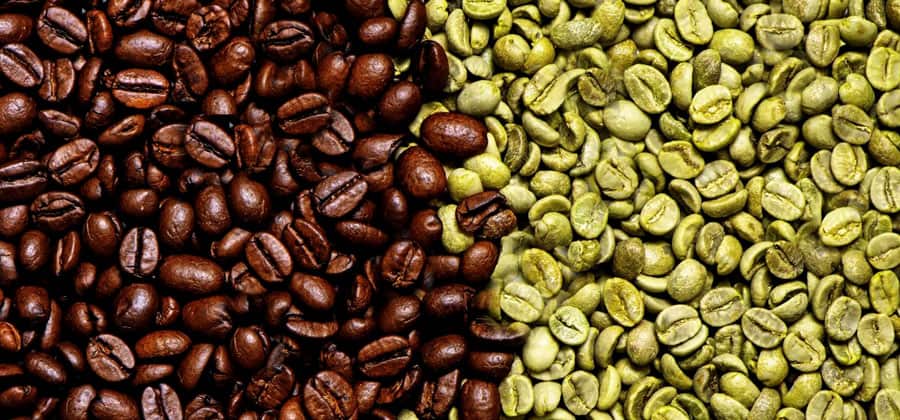
On the other hand, roasted coffee beans such as espresso beans can definitely be snacked on.
What Do Coffee Beans Taste Like?
First things first: what do roasted coffee beans taste like? Well, it depends on the bean’s origin and roast level.
- Light roasts can have a fruity and floral flavor while medium roasts are typically well-rounded with hints of chocolate and nutty to fruity.
- Dark roasts are chocolatey and bitter, with a toasty taste.
Some may describe coffee beans as slightly fruity while others simply find them too bitter or acidic – ultimately, finding the best coffee bean experience comes down to personal preference.

How Many Coffee Beans Can You Eat?
The number of coffee beans you can eat depends on the caffeine content of the beans, which can widely differ based on the bean type, serving size, and variety.
Generally, the caffeine content of arabica coffee beans is 3.41% per dry mass while robusta coffee has 8.16%. These numbers are reduced after roasting, depending on the roast time.
As for dark chocolate covered coffee beans, you can get 336mg of caffeine per 28 pieces, according to the USDA.
With the varying amounts of caffeine in coffee beans, be sure to check the labels for more accurate numbers on your caffeine consumption.
Note that the FDA cited 400 milligrams of caffeine per day to be safe for the consumption of healthy adults.
What are the Benefits of Eating Coffee Beans?
Now, let’s spill the beans on the wondrous benefits of eating coffee beans. Just like drinking coffee, eating the beans offer positive effects on your body, and may even deliver them to your system faster.
1. Quick Caffeine Boost
Compared to when you drink coffee, a coffee bean may give you that caffeine boost quicker.
A study in Sports Medicine suggests that some types of caffeine can be absorbed faster when administered orally than through the stomach.
So if you aim to be alert in a jiffy, I recommend that you grab a coffee bean to eat the next time you crave your caffeine fix.
2. Source of Antioxidants
As for the health benefits, every bean is packed with antioxidants that could have long-term protective effects against certain cancers, diabetes, Parkinson’s disease, and heart ailments.
The types of antioxidants found in coffee beans include the following:
- Cafesol
- Trigonelline
- Chlorogenic Acid
- Melanoidins
- Quinine
- Caffeine
Through the Ferric reducing antioxidant power (FRAP) which measures the antioxidants in foods, it is revealed that espresso coffee has over 120,000 antioxidants while decaffeinated coffee has about 93,000 antioxidants.
These numbers dwarf the FRAP score of teas which can only carry up to 10,000 antioxidants.
When taken together with an overall healthy diet and lifestyle habits, having a consistent coffee fix can play an important role in keeping us feeling energized & alert throughout the day.
Click here to read more about the health benefits of coffee on the body.
What are the Risks of Eating Coffee Beans?
That being said – like any food item there are also risks associated with eating too many coffee beans.
The recommended amount of caffeine that you can safely ingest is 400 milligrams in a day. Going over that amount can result in negative effects on the body.
Common side effects of excessive intake of coffee beans include:
- insomnia
- anxiety
- heartburn
- minor stomach upset
- pregnancy complications
- increased bowel movements
If left unchecked these issues can quickly become more serious leading to physical exhaustion & dehydration amongst various additional health complications depending on individual sensitivities.
Like all things in life, consuming coffee beans should be done in moderation while still considering your own individual dietary needs & health risks.
4 Ways to Eat Coffee Beans
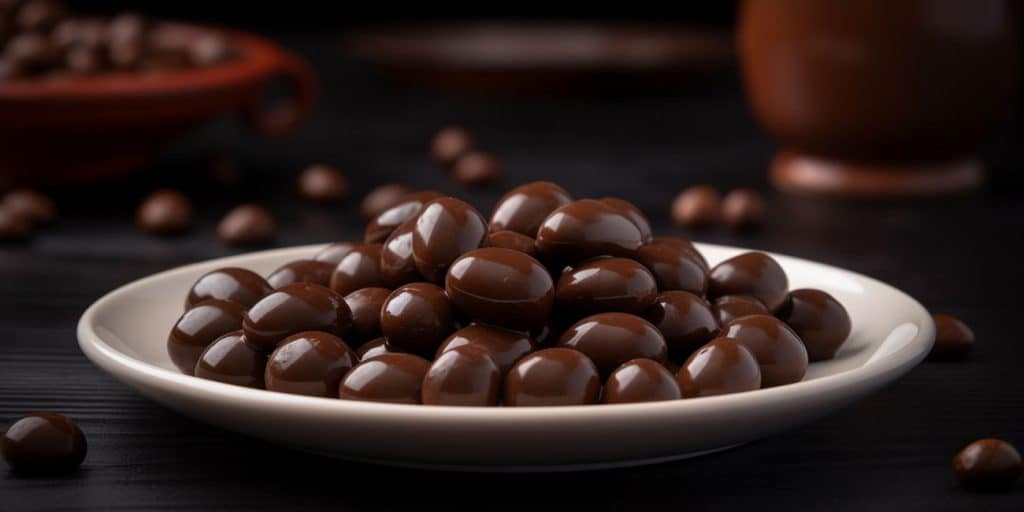
Let’s look at some creative but still safe ideas to reap all the benefits of eating coffee beans while avoiding any potential issues along the way.
- One popular way to snack on coffee beans is by sprinkling them into yogurt, cereal, oatmeal, smoothies, and other recipes that need an extra kick of energy and flavor.
- Alternatively, they can also be enjoyed straight out of the bag. Just be sure to break them down with your teeth carefully as whole coffee beans can be hard to digest and may cause digestive issues.
- You can even create unique desserts such as mousses with espresso beans for a delicious after-dinner treat.
- You could also go for chocolate-covered coffee beans, which I highly recommend if you love mocha. You can buy them from a store, or even make them at home.
Whichever way you choose to try coffee beans, just remember that moderation is key. Enjoying these tiny treats responsibly will leave you feeling energized and ready to take on whatever challenges come your way.
How to Make Chocolate-Covered Coffee Beans at Home
A dessert snack and a source of caffeine in one, chocolate-covered coffee beans are delicious and simple to make. Here’s how you can make them at home:
- Prepare your ingredients:
– 1 cup of dark roasted coffee beans
– 1 cup of chopped chocolate
– 3 tablespoons of cocoa powder
– Wax paper
– Small spoon
– Double boiler or saucepan - Use the double boiler or saucepan to melt the chocolate until creamy, then turn off the heat.
- Stir in the coffee beans until they are completely coated with the melted chocolate.
- Using a small spoon, scoop the chocolate-coated beans and place them individually on waxed paper on a cookie sheet. Allow excess chocolate to drip off.
- Let the chocolate-covered beans cool for 1-2 hours at room temperature until the chocolate solidifies. Break apart any large clumps that form.
- Sprinkle with cocoa powder or add optional toppings like crushed nuts.
Frequently Asked Questions (FAQs)
Coffee grounds and espresso powder can be used in baking, but they should not be consumed on their own. The particles may cause gastronomical irritation if swallowed whole or even ground up into a powder. Additionally, due to the high acidity levels of brewed coffee and espresso, drinking or consuming it could possibly lead to an upset stomach.
No – caffeine consumption for animals can be toxic and fatal. Excessive amounts of caffeine can be very harmful to cats and dogs; therefore it’s recommended that pets don’t consume any kind of caffeinated beverage or food item like coffee beans.
While raw green coffee beans have been marketed to help in weight loss, there’s no conclusive evidence yet for the claim. Still, caffeine has been known to increase energy levels which could potentially help you work out more often or longer than usual when combined with other healthy lifestyle choices such as regular exercise and well-balanced meals.
Conclusion
Eating roasted coffee beans can be a great way to get your daily caffeine boost while reaping other health benefits, but it’s also important to understand their potential side effects.
When done right though (opting for roasted beans and eating them in moderation), you can enjoy these beans without worries just as you would enjoy your cup of coffee.
I hope that this article has provided some insight into why you’d want to eat these little treats. And remember, never feed them to pets.




